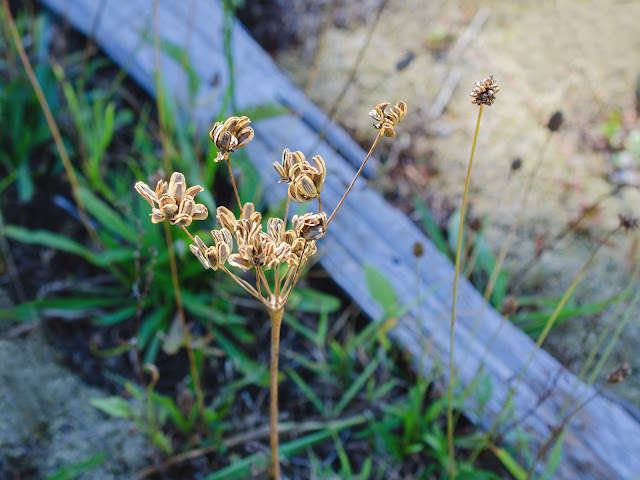Another day, another nursery. It's barely spring, but gardening fever has set in. We dropped in this afternoon at
Potters. They'd just opened last Friday, and weren't near finished stocking; most of the area under cover was still empty, the tree and shrub section just bare mud, with a couple of cats. Workers dashed around, hauling carts of plants, tools, scraps of planking. A table held a box of small paint cans, and on a piece of cardboard, a paintbrush thick with drying blue paint.
There were three or four other customers; an old lady buying a hellebore, a man in to pick up a large order, another man who got into his van, empty handed, as we parked.
Most of the plants already laid out, perennials, are still tiny. There are few flowers, not even buds. The hostas in their pots were still under the mud. (Just like my hostas here at home.) But there were blooming primulas, tables of them. I found a couple more white ones; they show up so well in my deep shade at this time of year. And Laurie found the pansies he was after. And bought more soil. He always buys soil; you'd think he was trying to build a hill.
 |
| Half a table's worth of primulas. Not too many whites available this year. |
 |
| Purple primulas |
 |
| Pink and yellow |
 |
| I loved these pale pink hellebores. |
 |
| Most of our little load of plants. Laurie bought four more pansies and a fern. |
It rained the rest of the afternoon. It's raining now. It will probably rain tomorrow. I don't mind; there will be plenty of time to start getting muddy.
 |
| The stuff of dreams |
We didn't buy any of these, but I was tempted. Laurie didn't notice them; the ferns were just beyond, and drew his attention.
He cultivates one sunny patch suitable for veggies. He's talking about Swiss chard, which did well last year. I might put in a few lettuce again, to feed the slugs. I wonder if they like sweet peas?











































